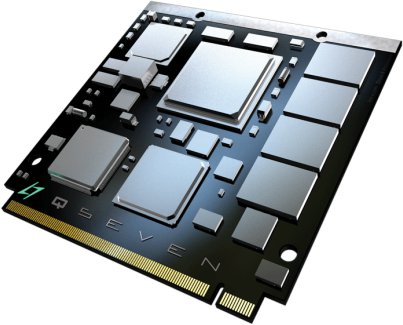Following my blog entry about Databases for Linux Embedded Systems, here are the instructions to cross-compile SQlite. First download the latest version of SQLite amalgamation with autoconf script (version 3.75): wget http://www.sqlite.org/sqlite-autoconf-3070500.tar.gz Extract the source code: tar xzvf sqlite-autoconf-3070500.tar.gz Configure and build the source code. I’ll use mipsel-linux-gcc, but any other cross-compiler could be used. cd sqlite-autoconf-3070500 ./configure –host=mipsel-linux –target=mipsel-linux –prefix=/home/jaufranc/edev/sqlite-mips make make install At this point the library is correctly configured and installed, so you’d just need to copy the relevant files to your target board (skip include and share directories and libsqlite3.a) . Let’s check the size of the required files: ls -l ../sqlite-mips/bin/ -rwxr-xr-x 1 jaufranc jaufranc 125513 2011-03-14 14:21 sqlite ls -l ../sqlite-mips/lib/libsqlite3.so.0.8.6 -rwxr-xr-x 1 jaufranc jaufranc 2087584 2011-03-14 14:21 ../sqlite-mips/lib/libsqlite3.so.0.8.6 sqlite binary is 122.57KB and the dynamic library 2038.65KB. Let’s see if we can optimize the binary size with compilation flags and by disabling some […]
HbbTV: Hybrid Broadcast Broadband TV
HbbTV (Hybrid Broadcast Broadband TV) is a new European standard for web-based smart TV applications for TVs and set-top boxes. Services and applications delivered via HbbTV include traditional broadcast TV channels, catch-up services, video-on-demand, EPG, interactive advertising, personalisation, voting, games, social networking and other multimedia applications. The latest version of the HbbTV specification is 1.1.1 and can normally be downloaded after registering on ETSI website. The official nomenclature of the specification is ETSI TS 102 796. It is also directly available at the following link – http://www.etsi.org/deliver/etsi_ts/102700_102799/102796/01.01.01_60/ts_102796v010101p.pdf The HbbTV specification is based on existing standards and web technologies including OIPF (Open IPTV Forum), CEA, DVB and W3C. HbbTV Specifications specifically makes use of the following standards: CEA-2014 – Web-based Protocol and Framework for Remote User Interface on UPnP Networks and the Internet (Web4CE), also known as CE-HTML. Open IPTV Forum Release 1 Volume 5 – Declarative Application Environment of the […]
QSeven Form Factor Embedded Boards by Seco
QSeven is a new standard (QSeven Specifications 1.20) that provides pinout, electromechanical description and implementation guidelines so that the main boards (with the MPU) be easily exchanged. So that you can a larger board with all connectors and a QSeven boards based on Intel icore, Atom or other processors based on ARM that simply fits into that larger board. The QSeven concept is defined as follows: Qseven Concept The Qseven concept is an off-the-shelf, multi vendor, Single-Board-Computer that integrates all the core components of a common PC and is mounted onto an application specific carrier board. Qseven modules have a standardized form factor of 70mm x 70mm and have specified pinouts based on the high speed MXM system connector that has a standardized pinout regardless of the vendor. The Qseven module provides the functional requirements for an embedded application. These functions include, but are not limited to, graphics, sound, mass […]
Video Wall with Beagleboards and ffmpeg
There was a 6-Screen Video Wall at Embedded World 2011, powered by 6 Beagleboard xM (based on Texas Instruments OMAP 3 running @ 1Ghz – Cost: 149 USD / piece), connected vi Ethernet. In the video they explain that the system is running Linux Ångström and the video is played and synchronized over Ethernet with ffmpeg. After doing some research on how to do this, they are probably using omapfbplay with netsync enabled which you can compile as follows: NETSYNC=y OMAPFB=y make However, if you are using Linux Ångström, omapfbplay with netsync is enabled by default. This can also be done with the first version of Beagleboard (without Ethernet) via USB. They can also control each display independently and synchronize the mouse and keyboard thanks to Synergy.
Toshiba Resistive Multi-touch Screen
Toshiba developed a proprietary algorithm for multi-touch resistive touchscreen and they exhibited a demo at Embedded World 2011. The hardware is based around Toshiba TMPA900 (ARM926EJ-S core running at 200 Mhz) and runs embedded Linux. This type of system is aimed at home appliances (washing machine, refrigerator…), industrial and medical applications and can be used with a pen, stylus or gloved hand. For example, a doctor wearing gloves would be able to use multi-touch gestures on such screens whereas it would not be possible on capacitive touchscreens or standard resistive touchscreens. It was not specified but I suppose that technology would only support 2 points since they only showed two fingers gesture in the demo. This should not be a problem for the type of application. An another advantage of this solutions is that it brings multi-touch technology to cost sensitive industrial applications. The technology is still under development and […]
Tablet Reference Design based on Samsung Exymos 4210
HardKernel, a Korean company, announced the ODROID-A, a tablet reference design based on Samsung Exymos 4210 (codename Orion), dual-core ARM Cortex-A9, Mali-400 GPU, 1GB Low Power DDR2, 10.1 inch 1366 x 768 TFT with capacitive multi-touch, Dual Camera, HSPA evolution, 9-axis sensor and running Android 2.3 Gingerbread. They will update it to Android 3.0 later on. This development kit will be available at the end of March 2011 for 749 USD (800,000 Won) for developers only. This should offer similar performance as the Motorola Xoom (except 3D maybe), and cost less which is a bit surprising for a development platform. They have an online community to support development on this hardware and they’ll provide the full source code and schematics free of charge. ODROID-A Specifications: Processor Samsung Exynos4210 Cortex-A9 Dualcore 1Ghz with 1MB L2 cache Memory 1024MB LP DDR2 800Mega data rate 3D Accelerator Mali-400 MP Core Micro-Sd slot 8GB […]
Amahi 6 (Home Digital Assistant) and Amahi Sync Released Today.
Amahi is an open source home digital assistant (HDA) running on Fedora. It is basically a server to manage all your media files (like a NAS), backup your PC’s data and host some private web applications (calendar, wiki, …) with people on your LAN. Amahi is available on several platforms such as Intel and AMD x86 processors and embedded platforms such as Intel Atom (ECOPC N.1) and Marvell Sheeva ARM processor (Sheevaplug). They’ve released their latest version Amahi 6 today. Here’s what they say about it: Amahi 6.0: Reliability, Reliability, Reliability! Amahi 6.0 brings a plethora of upgrades, reliability fixes and features, and better hardware support, courtesy of Fedora 14. Here are some of the highlights in this release (see the Amahi 6.0 release notes for all the details as well as the upgrade guide from Amahi 5/Fedora 12). Online Synchronization, Server Alerts and Premium Plans! The Amahi Sync and […]
Cypress Semiconductors PSoC Development Kits
Cypress Semiconductors was at Embedded World 2011 exhibiting their PSoC 5 development kits based on ARM Cortex M3 and analog & digital programmable modules. They had different development boards and demos based on PSoC 5: A simple board with PSoC 5, capacitive sensing, radio and accelerometer where they lit up a LED when the board moves (CY8CKIT-014 kit – see below for details). A similar board with a dot-matrix LCD and a potentiometer, where they display the voltage at the Analog input on the LCD. (CY8KIT-010 kit – see below for details). A full development kit with PSoC 5, PSoC 3 and PSoc 5. (CY8KIT-001 kit – see below for details). Several demo of multi-touch and motion sensors capabilities etc.. The development kits are already available (engineering samples), but PSoC 5 will only be mass-produced in Q3 2011 since they are currently qualifying the chip. You can see the development […]











